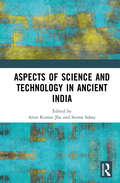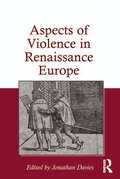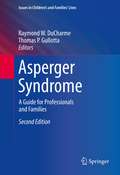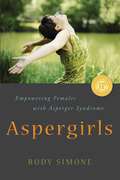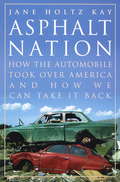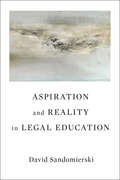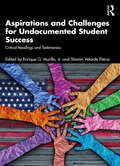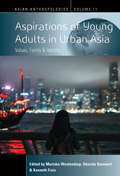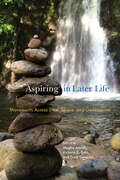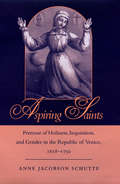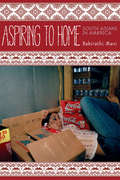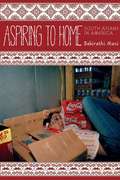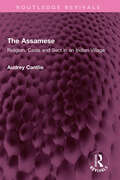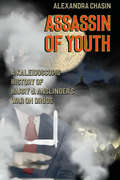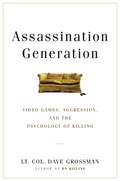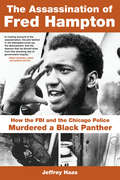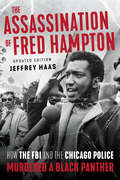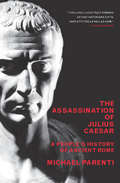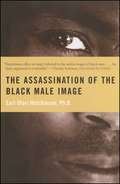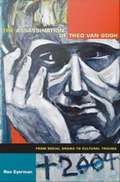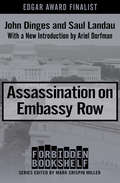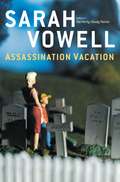- Table View
- List View
Aspects of Science and Technology in Ancient India
by Arun Kumar Jha and Seema SahayThis book critically examines different aspects of scientific and technological development in Ancient India. It studies the special contribution of the history of science in our scientific understanding and its relationship with the philosophy and sociology of science. The volume: Discusses diverse and wide-ranging themes including Tibetan Buddhist tradition of neuro-biology; Sheds light on the unique developments within iron technology and urbanization in ancient Odisha; Studies the trajectory of proto-historic astronomy in India and the science of monsoon in early India; Evaluates the legacy of Aryabhata based on his major works related to astronomy and mathematics through a multidimensional perspective; Analyses the traditional knowledge of medicine in early India, the golden age of surgery with reference to the ancient Greek and Arabic systems of medicine, and the Buddhist influence on the science of medicine in Tibet. This book will be an essential read for scholars and researchers of ancient history, Indian history, history of science, history of technology, science and technology studies, and South Asian studies.
Aspects of Violence in Renaissance Europe
by Jonathan DaviesInterest in the history of violence has increased dramatically over the last ten years and recent studies have demonstrated the productive potential for further inquiry in this field. The early modern period is particularly ripe for further investigation because of the pervasiveness of violence. Certain countries may have witnessed a drop in the number of recorded homicides during this period, yet homicide is not the only marker of a violent society. This volume presents a range of contributions that look at various aspects of violence from the fourteenth to the seventeenth centuries, from student violence and misbehaviour in fifteenth-century Oxford and Paris to the depiction of war wounds in the English civil wars. The book is divided into three sections, each clustering chapters around the topics of interpersonal and ritual violence, war, and justice and the law. Informed by the disciplines of anthropology, criminology, the history of art, literary studies, and sociology, as well as history, the contributors examine all forms of violence including manslaughter, assault, rape, riots, war and justice. Previous studies have tended to emphasise long-term trends in violent behaviour but one must always be attentive to the specificity of violence and these essays reveal what it meant in particular places and at particular times.
Asperger Syndrome: A Guide for Professionals and Families (Issues in Children's and Families' Lives #3)
by Thomas P. Gullotta Raymond W. DucharmeSince the first edition was published in 2003, an enormous amount of research into Asperger Syndrome (AS) and autism spectrum disorders has been conducted. New genetic and epigenetic theories, updated findings on viable therapies, and targeted skill-building programs provide a solid foundation of information for professionals to use in practice and impart to concerned families. The Second Edition of Asperger Syndrome synthesizes the current state of the field, beginning with the controversy over the proposed linking of the condition with autism in the DSM-5. This comprehensive guide gives readers a deeper understanding of the disorder, detailing the effective strategies and therapies available to improve the lives of young people with AS and ensure their successful transition from childhood to adolescence to adulthood. Focusing on core deficit and treatment areas, expert contributors analyze the evidence base on behavioral and pharmacological interventions as well as educational strategies geared toward bolstering cognitive and social skills. In addition to epidemiology, etiology, diagnosis, and assessment, this volume offers the most current information on: Counseling and other therapeutic strategies for children with AS and their families.Early intervention for children and youth with AS.Social skills instruction for children with AS.Evaluating evidence-based instruction for children with AS.Comprehensive education-based mental health services for students diagnosed on the autism spectrum.Practical advice for families, from a parent of a child with AS.The Second Edition of Asperger Syndrome is an essential reference for researchers, clinicians, and scientist-practitioners in clinical child, school, and developmental psychology; child and adolescent psychiatry; education; rehabilitation medicine/therapy; social work; and pediatrics.
Asperger Syndrome, Second Edition
by MD Fred R. Volkmar Ami Klin Maria Asperger Felder James C. McpartlandCompletely revised with the latest research and clinical strategies, this is the authoritative volume on Asperger syndrome (now part of DSM-5 autism spectrum disorder). Considered the definitive reference since its initial publication, the book focuses on how to assess each child or adolescent's needs and provide effective interventions in the areas of communication, behavior, and academic and vocational functioning. The neural and genetic bases of autism spectrum disorders are also explored. New to This Edition *Expanded coverage of evidence-based assessment and treatment, including two chapters on behavioral interventions. *Addresses challenges in the transition to new diagnostic criteria for autism spectrum disorder in DSM-5. *Chapters on neuropsychological advances, the transition to higher education, and forensic issues. *Many new authors and extensively revised chapters.
Aspergirls
by Rudy Simone*Gold Medal Winner in the Sexuality / Relationships Category of the 2011 IPPY Awards** Honorary Mention in the 2010 BOTYA Awards Women's Issues Category *Girls with Asperger's Syndrome are less frequently diagnosed than boys, and even once symptoms have been recognised, help is often not readily available. The image of coping well presented by AS females of any age can often mask difficulties, deficits, challenges, and loneliness. This is a must-have handbook written by an Aspergirl for Aspergirls, young and old. Rudy Simone guides you through every aspect of both personal and professional life, from early recollections of blame, guilt, and savant skills, to friendships, romance and marriage. Employment, career, rituals and routines are also covered, along with depression, meltdowns and being misunderstood. Including the reflections of over thirty-five women diagnosed as on the spectrum, as well as some partners and parents, Rudy identifies recurring struggles and areas where Aspergirls need validation, information and advice. As they recount their stories, anecdotes, and wisdom, she highlights how differences between males and females on the spectrum are mostly a matter of perception, rejecting negative views of Aspergirls and empowering them to lead happy and fulfilled lives. This book will be essential reading for females of any age diagnosed with AS, and those who think they might be on the spectrum. It will also be of interest to partners and loved ones of Aspergirls, and anybody interested either professionally or academically in Asperger's Syndrome.
Asphalt Nation
by Jane Holtz KayAsphalt Nation is a powerful examination of how the automobile has ravaged America's cities and landscape over the past 100 years together with a compelling strategy for reversing our automobile dependency. Jane Holtz Kay provides a history of the rapid spread of the automobile and documents the huge subsidies commanded by the highway lobby, to the detriment of once-efficient forms of mass transportation. Demonstrating that there are economic, political, architectural, and personal solutions to the problem, she shows that radical change is entirely possible. This book is essential reading for everyone interested in the history of our relationship with the car, and in the prospect of returning to a world of human mobility.
Aspiration and Reality in Legal Education (G - Reference,information And Interdisciplinary Subjects Ser.)
by David SandomierskiContrary to conventional narratives about legal education, Aspiration and Reality in Legal Education reveals a widespread desire among law teachers to integrate both theory and practice into the education of versatile and civic-minded lawyers. Despite this stated desire, however, this aspiration is largely unrealized due to a host of intellectual and institutional factors that produce a profound gap between what professors believe about law and the ideas they communicate through their teaching. Drawing on interviews with over sixty law professors in Canada, David Sandomierski makes two important empirical discoveries in this book. First, he establishes that, contrary to a dominant narrative in legal education that conceives of theory and practice as oppositional, the vast majority of law professors consider theory to be vitally important in preparing "better lawyers." Second, he uncovers a significant gap between the realist theoretical commitments held by a majority of professors and the formalist theories they almost uniformly convey through their teaching and conceptions of legal reasoning. Understanding the intellectual and institutional factors that account for these tensions, Sandomierski argues, is essential for any meaningful project of legal education reform.
Aspirations and Challenges for Undocumented Student Success: Critical Readings and Testimonios
by Enrique G. Murillo Sharon Velarde PierceAspirations and Challenges for Undocumented Student Success offers a comprehensive review of rigorous, innovative, and critical scholarship profiling the scope and terrain on undocumented student success. Compiling the most significant work in the field in terms of its contributions to research and professional practice, the volume opens with an exploration the aspirations of undocumented students and the fight for equity, followed by an examination of the impact and influence of parents and families on educational outcomes. Finally, it concludes with testimonios reflecting on the educational experiences of undocumented students in America. Each section presents readings in chronological order, demonstrating the progression around undocumented student success in the field over the past 20+ years, in respect to the intentionality about integrating undocumented student success throughout equity initiatives, breaking down institutional silos, fostering welcoming campus environments, and advocating for solutions that allow undocumented students to achieve economic mobility in both policy and practice. This text is a must-have resource for graduate students and researchers in Educational Leadership and Policy, Multicultural Education, and Teacher Education. It will also be important reading for educational leaders, teachers, counselors, administrators, and organizations that share a common interest in and commitment to the educational issues that impact undocumented students and their families.
Aspirations of Young Adults in Urban Asia: Values, Family, and Identity (Asian Anthropologies #11)
by Mariske Westendorp, Désirée Remmert and Kenneth FinisComparing first-person ethnographic accounts of young people living, working, and creating relationships in cities across Asia, this volume explores their contemporary lives, pressures, ideals, and aspirations. Delving into topical issues such as education, social inequality, family pressures, changing values, precarious employment, and political discontent, the book explores how young people are pushing boundaries and imagining their future. In this way, they explore and create the identities of their local and global surroundings.
Aspirations of Young Adults in Urban Asia: Values, Family, and Identity (Asian Anthropologies #11)
by Mariske Westendorp Désirée Remmert and Kenneth FinisComparing first-person ethnographic accounts of young people living, working, and creating relationships in cities across Asia, this volume explores their contemporary lives, pressures, ideals, and aspirations. Delving into topical issues such as education, social inequality, family pressures, changing values, precarious employment, and political discontent, the book explores how young people are pushing boundaries and imagining their future. In this way, they explore and create the identities of their local and global surroundings.
Aspiring in Later Life: Movements across Time, Space, and Generations (Global Perspectives on Aging)
by Dumitrita Lunca Lisa Johnson Erdmute Alber Cati Coe Harmandeep Kaur Gill Alfonso Otaegui Julia Pauli Nele Wolter Susan Reynolds WhyteIn our highly interconnected and globalized world, people often pursue their aspirations in multiple places. Yet in public and scholarly debates, aspirations are often seen as the realm of younger, mobile generations, since they are assumed to hold the greatest potential for shaping the future. This volume flips this perspective on its head by exploring how aspirations are constructed from the vantage point of later life, and shows how they are pursued across time, space, and generations. The aspirations of older people are diverse, and relate not only to aging itself but also to planning the next generation’s future, preparing an "ideal" retirement, searching for intimacy and self-realization, and confronting death and afterlives. Aspiring in Later Life brings together rich ethnographic cases from different regions of the world, offering original insights into how aspirations shift over the course of life and how they are pursued in contexts of translocal mobility. This book is also freely available online as an open-access digital edition.
Aspiring Saints: Pretense of Holiness, Inquisition, and Gender in the Republic of Venice, 1618-1750 (The\other Voice In Early Modern Europe Ser.)
by Anne Jacobson SchutteWinner of an Honorable Mention in the Professional/Scholarly Publishing Awards given by the Association of American PublishersBetween 1618 and 1750, sixteen people—nine women and seven men—were brought to the attention of the ecclesiastical authorities in Venice because they were reporting visions, revelations, and special privileges from heaven. All were investigated, and most were put on trial by the Holy Office of the Inquisition on a charge of heresy under various rubrics that might be translated as "pretense of holiness."Anne Jacobson Schutte looks closely at the institutional, cultural, and religious contexts that gave rise to the phenomenon of visionaries in Venice. To explain the worldview of the prosecutors as well as the prosecuted, Schutte examines inquisitorial trial dossiers, theological manuals, spiritual treatises, and medical works that shaped early modern Italians' understanding of the differences between orthodox Catholic belief and heresy. In particular, she demonstrates that socially constructed assumptions about males and females affected how the Inquisition treated the accused parties. The women charged with heresy were non-elites who generally claimed to experience ecstatic visions and receive messages; the men were usually clergy who responded to these women without claiming any supernatural experience themselves. Because they "should have known better," the men were judged more harshly by authorities.Placing the events in a context larger than just the inquisitorial process, Aspiring Saints sheds new light on the history of religion, the dynamics of gender relations, and the ambiguous boundary between sincerity and pretense in early modern Italy.
Aspiring to Home: South Asians in America
by Bakirathi ManiWhat does it mean to belong? How are twenty-first-century diasporic subjects fashioning identities and communities that bind them together? Aspiring to Home examines these questions with a focus on immigrants from India, Pakistan, and Bangladesh. Advancing a theory of locality to explain the means through which immigrants of varying regional, religious, and linguistic backgrounds experience what it means to belong, Bakirathi Mani shows how ethnicity is produced through the relationship between domestic racial formations and global movements of class and capital. Aspiring to Home focuses on popular cultural works created by first- and second-generation South Asians from 1999–2009, including those by author Jhumpa Lahiri and filmmaker Mira Nair, as well as public events such as the Miss India U.S.A. pageant and the Broadway musical Bombay Dreams. Analyzing these diverse productions through an interdisciplinary framework, Mani weaves literary readings with ethnography to unravel the constraints of form and genre that shape how we read diasporic popular culture.
Aspiring to Home: South Asians in America
by Bakirathi ManiWhat does it mean to belong? How are twenty-first-century diasporic subjects fashioning identities and communities that bind them together? Aspiring to Home examines these questions with a focus on immigrants from India, Pakistan, and Bangladesh. Advancing a theory of locality to explain the means through which immigrants of varying regional, religious, and linguistic backgrounds experience what it means to belong, Bakirathi Mani shows how ethnicity is produced through the relationship between domestic racial formations and global movements of class and capital. Aspiring to Home focuses on popular cultural works created by first- and second-generation South Asians from 1999–2009, including those by author Jhumpa Lahiri and filmmaker Mira Nair, as well as public events such as the Miss India U.S.A. pageant and the Broadway musical Bombay Dreams. Analyzing these diverse productions through an interdisciplinary framework, Mani weaves literary readings with ethnography to unravel the constraints of form and genre that shape how we read diasporic popular culture.
The Assamese: Religion, Caste and Sect in an Indian Village (Routledge Revivals)
by Audrey CantlieFirst published in 1984, The Assamese is an anthropological exploration of Assam. The many tribes living in the hill tracts of Assam early engaged the attention of anthropologists but no significant studies have been made of the people living in the Assam valley who call themselves Assamese, the distinctive features of whose culture are inseparably connected with their religious institutions. The purpose of this book is to give an account of the way of life which the Assamese people are seeking to preserve, and its chief claim to attention is that it is the very first field-study of the village foundations of social life in Assam, containing a plenitude of detailed information on local aggregates, caste divisions, modes of livelihood, devotional practices, marriage patterns, and much else. This book will be of interest to students of anthropology, ethnic studies, history and cultural studies.
Assassin of Youth: A Kaleidoscopic History of Harry J. Anslinger’s War on Drugs
by Alexandra ChasinCommissioner of the Federal Bureau of Narcotics from its establishment in 1930 until his retirement in 1962, Harry J. Anslinger is the United States' little known first drug czar. Anslinger was a profligate propagandist with a flair for demonizing racial and immigrant groups and perhaps best known for his zealous pursuit of harsh drug penalties and his particular animus for marijuana users. But what made Anslinger who he was, and what cultural trends did he amplify and institutionalize? Having just passed the hundredth anniversary of the Harrison Act--which consolidated prohibitionist drug policy and led to the carceral state we have today--and even as public doubts about the drug war continue to grow, now is the perfect time to evaluate Anslinger's social, cultural, and political legacy. In Assassin of Youth, Alexandra Chasin gives us a lyrical, digressive, funny, and ultimately riveting quasi-biography of Anslinger. Her treatment of the man, his times, and the world that arose around and through him is part cultural history, part kaleidoscopic meditation. Each of the short chapters is anchored in a historical document--the court decision in Webb v. US (1925), a 1935 map of East Harlem, FBN training materials from the 1950s, a personal letter from the Treasury Department in 1985--each of which opens onto Anslinger and his context. From the Pharmacopeia of 1820 to death of Sandra Bland in 2015, from the Pennsylvania Railroad to the last passenger pigeon, and with forays into gangster lives, CIA operatives, and popular detective stories, Chasin covers impressive ground. Assassin of Youth is as riotous and loose a history of drug laws as can be imagined--and yet it culminates in an arresting and precise revision of the emergence of drug prohibition. Today, even as marijuana is slowly being legalized, we still have not fully reckoned with the racist and xenophobic foundations of our cultural appetite for the severe punishment of drug offenders. In Assassin of Youth, Chasin shows us the deep, twisted roots of both our love and our hatred for drug prohibition.
Assassination Generation: Video Games, Aggression, and the Psychology of Killing
by Dave Grossman Katie Miserany Kristine Paulsen<P>The author of the 400,000-copy bestseller On Killing reveals how violent video games have ushered in a new era of mass homicide--and what we must do about it. <P>Paducah, Kentucky, 1997: a 14-year-old boy shoots eight students in a prayer circle at his school. <P>Littleton, Colorado, 1999: two high school seniors kill a teacher, twelve other students, and then themselves. <P>Utoya, Norway, 2011: a political extremist shoots and kills sixty-nine participants in a youth summer camp. <P>Newtown, Connecticut, 2012: a troubled 20-year-old man kills 20 children and six adults at the elementary school he once attended. <P>What links these and other horrific acts of mass murder? A young person's obsession with video games that teach to kill. <P>Lt. Col. Dave Grossman, who in his perennial bestseller On Killing revealed that most of us are not "natural born killers" - and who has spent decades training soldiers, police, and others who keep us secure to overcome the intrinsic human resistance to harming others and to use firearms responsibly when necessary - turns a laser focus on the threat posed to our society by violent video games. <P>Drawing on crime statistics, cutting-edge social research, and scientific studies of the teenage brain, Col. Grossman shows how video games that depict antisocial, misanthropic, casually savage behavior can warp the mind - with potentially deadly results. His book will become the focus of a new national conversation about video games and the epidemic of mass murders that they have unleashed.
The Assassination of Fred Hampton: How the FBI and the Chicago Police Murdered a Black Panther
by Jeffrey HaasUncovering a cold-blooded execution at the hands of a conspiring police force, this engaging account relentlessly pursues the murderers of Black Panther Fred Hampton. Documenting the entire 14-year process of bringing the killers to justice, this chronicle also depicts the 18-month court trial in detail. Revealing Hampton himself in a new light, this examination presents him as a dynamic community leader whose dedication to his people and to the truth inspired the young lawyers of the People's Law Office, solidifying their lifelong commitment to fighting corruption. Contending with FBI stonewalling and unlimited government resources bent on hiding a darker plot, this reconstruction relates an inspiring narrative of upholding morality in one man's memory.
The Assassination of Fred Hampton: How the FBI and the Chicago Police Murdered a Black Panther
by Jeffrey HaasOn December 4, 1969, attorney Jeff Haas was in a police lockup in Chicago, interviewing Fred Hampton's fiancée. She described how the police pulled her from the room as Fred lay unconscious on their bed. She heard one officer say, "He's still alive." She then heard two shots. A second officer said, "He's good and dead now." She looked at Jeff and asked, "What can you do?" Fifty years later, Haas finds that there is still an urgent need for the revolutionary systemic changes Hampton was organizing to accomplish. With a new prologue discussing what has changed—and what has not—The Assassination of Fred Hampton remains Haas's personal account of how he and People's Law Office partner Flint Taylor pursued Hampton's assassins, ultimately prevailing over unlimited government resources and FBI conspiracy. Not only a story of justice delivered, the book puts Hampton in the spotlight as a dynamic community leader and an inspiration for those in the ongoing fight against injustice and police brutality.
The Assassination of Jacques Lemaigre Dubreuil: A Frenchman between France and North Africa (History and Society in the Islamic World)
by William A. Hoisington, Jr.This is a political biography of the French industrialist and political activist Jacques Lemaigre Dubreuil (1894-1955), president of the Taxpayers' Federation in the 1930s, entrepreneur in wartime France and Africa, organizer of the 'Group of Five' in Algiers which prepared for the Allied landings in North Africa (November 1942), 'inventor' of General Henri Giraud as a candidate for the leadership of liberated North and West Africa, negotiator of the Murphy-Giraud Agreements and the Anfa Memorandum with President Roosevelt (1942 and 1943), political writer on the postwar future of France in Morocco and the owner of the liberal newspaper Maroc-Presse. He was assassinated in Casablanca by French counter-terrorists in June 1955, a 'turning point' event which pushed the French government to grant independence to Morroco. Was he a rabble-rouser, a demagogue, a betrayer of French interests at home and overseas or a reformer, a patriot, a hero of the anti-German resistance, and a champion of Franco-Moroccan solidarity?
The Assassination of Julius Caesar: A People's History of Ancient Rome (A\new Press People's History Ser.)
by Michael Parenti&“A provocative history&” of intrigue and class struggle in Ancient Rome—&“an important alternative to the usual views of Caesar and the Roman Empire&” (Publishers Weekly). Most historians, both ancient and modern, have viewed the Late Republic of Rome through the eyes of its rich nobility—the 1 percent of the population who controlled 99 percent of the empire&’s wealth. In The Assassination of Julius Caesar, Michael Parenti recounts this period, spanning the years 100 to 33 BC, from the perspective of the Roman people. In doing so, he presents a provocative, trenchantly researched narrative of popular resistance against a powerful elite. As Parenti carefully weighs the evidence concerning the murder of Caesar, he adds essential context to the crime with fascinating details about Roman society as a whole. In these pages, we find reflections on the democratic struggle waged by Roman commoners, religious augury as an instrument of social control, the patriarchal oppression of women, and the political use of homophobic attacks. The Assassination of Julius Caesar offers a whole new perspective on an era thought to be well-known. &“A highly accessible and entertaining addition to history.&” —Book Marks
The Assassination of the Black Male Image
by Earl Ofari HutchinsonIn The Assassination of the Black Male Image, noted political analyst and media critic Dr. Earl Ofari Hutchinson offers a searing, controversial indictment of our society’s attitudes toward black men. The black male image, he argues, has been battered, maligned, and assaulted by academics, the press, and Hollywood, as well as by some black rappers, comedians, feminists, filmmakers, and novelists—many of whom he accuses of reinforcing, and profiting from, ethnic and sexual stereotypes. Offering both a wide historical perspective and acute insights into such racially charged events as the O. J. Simpson trial, the Clarence Thomas hearings, and the Million Man March, Hutchinson brilliantly counters the image of the black male as a figure entrenched in crime, drugs, and violence. At the same time, he issues a deeply moving call to rethink the way we view African-American men.
The Assassination of Theo Van Gogh: From Social Drama to Cultural Trauma
by Ron EyermanIn November 2004, the controversial Dutch filmmaker Theo van Gogh was killed on a busy street in Amsterdam. A twenty-six-year-old Dutch citizen of Moroccan descent shot van Gogh, slit his throat, and pinned a five-page indictment of Western society to his body. The murder set off a series of reactions, including arson against Muslim schools and mosques. In The Assassination of Theo van Gogh, Ron Eyerman explores the multiple meanings of the murder and the different reactions it elicited: among the Amsterdam-based artistic and intellectual subculture, the wider Dutch public, the local and international Muslim communities, the radical Islamic movement, and the broader international community. After meticulously analyzing the actions and reputations of van Gogh and others in his milieu, the motives of the murderer, and the details of the assassination itself, Eyerman considers the various narrative frames the mass media used to characterize the killing. Eyerman utilizes theories of social drama and cultural trauma to evaluate the reactions to and effects of the murder. A social drama is triggered by a public transgression of taken-for-granted norms; one that threatens the collective identity of a society may develop into a cultural trauma. Eyerman contends that the assassination of Theo van Gogh quickly became a cultural trauma because it resonated powerfully with the postwar psyche of the Netherlands. As part of his analysis of the murder and reactions to it, he discusses significant aspects of twentieth-century Dutch history, including the country's treatment of Jews during the German occupation, the loss of its colonies in the wake of World War II, its recruitment of immigrant workers, and the failure of Dutch troops to protect Muslims in Srebrenica in 1995.
Assassination on Embassy Row (Forbidden Bookshelf #7)
by John Dinges Saul LandauEdgar Award Finalist: The gripping account of an assassination on US soil and the violent foreign conspiracy that stretched from Pinochet&’s Chile to the streets of Washington, DC, with a new introduction by Ariel Dorfman. On September 10, 1976, exiled Chilean leader Orlando Letelier delivered a blistering rebuke of Augusto Pinochet&’s brutal right-wing regime in a speech at Madison Square Garden. Eleven days later, while Letelier was on Embassy Row in Washington, DC, a bomb affixed to the bottom of his car exploded, killing him and his coworker Ronni Moffitt. The slaying, staggering in its own right, exposed an international conspiracy that reached well into US territory. Pinochet had targeted Letelier, a former Chilean foreign minister and ambassador to the United States, and carried out the attack with the help of Operation Condor, the secret alliance of South America&’s military dictatorships dedicated to wiping out their most influential opponents. This gripping account tells the story not only of a political plot that ended in murder, but also of the FBI&’s inquiry into the affair. Definitive in its examination both of Letelier&’s murder and of the subsequent investigations carried out by American intelligence, Assassination on Embassy Row is equal parts keen analysis and true-life spy thriller.
Assassination Vacation
by Sarah VowellSarah Vowell exposes the glorious conundrumsof American history and culture with wit, probity, and an irreverent sense of humor. With Assassination Vacation, she takes us on a road trip like no other -- a journey to the pit stops of American political murder and through the myriad ways they have been used for fun and profit, for political and cultural advantage. From Buffalo to Alaska, Washington to the Dry Tortugas, Vowell visits locations immortalized and influenced by the spilling of politically important blood, reporting as she goes with her trademark blend of wisecracking humor, remarkable honesty, and thought-provoking criticism. We learn about the jinx that was Robert Todd Lincoln (present at the assassinations of Presidents Lincoln, Garfield, and McKinley) and witness the politicking that went into the making of the Lincoln Memorial. The resulting narrative is much more than an entertaining and informative travelogue -- it is the disturbing and fascinating story of how American death has been manipulated by popular culture, including literature, architecture, sculpture, and -- the author's favorite -- historical tourism. Though the themes of loss and violence are explored and we make detours to see how the Republican Party became the Republican Party, there are all kinds of lighter diversions along the way into the lives of the three presidents and their assassins, including mummies, show tunes, mean-spirited totem poles, and a nineteenth-century biblical sex cult.
